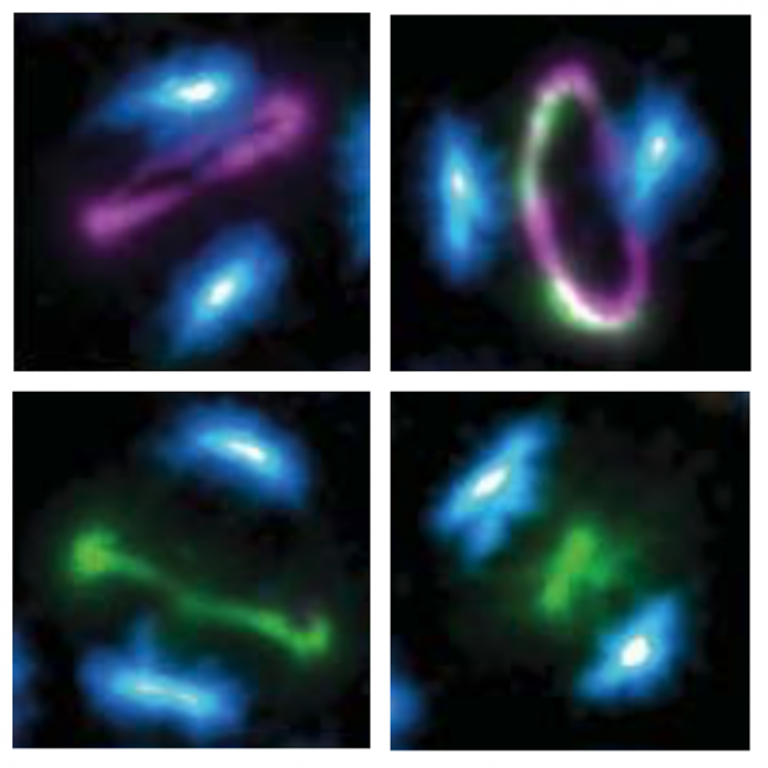New publication in Science for Baum, Saric and Henriques labs
7 August 2020
The proteasome controls ESCRT-III–mediated cell division in an archaeon.

Many archaea use ESCRT-III to divide, but how is it controlled? In a new publication in Science, shows that the proteasome, which is conserved in both eukaryotes and archaea, is key to the process. It triggers cell division by selectively targeting a structural ESCRT-III filament (purple) at the final stage of cell division, thereby freeing the contractile ESCRT-III filament (green) to constrict the cells.
Abstract:
In eukaryotes, proteasome-mediated degradation of cell cycle factors triggers mitotic exit, DNA segregation, and cytokinesis, a process that culminates in abscission dependent on the protein ESCRT-III. By studying cell division in an archaeal relative of eukaryotes, Tarrason Risa et al.identified a role for the proteasome in triggering cytokinesis by an archaeal ESCRT-III homolog. Cell division in this archaeon was driven by stepwise remodeling of a composite ESCRT-III–based division ring, where rapid proteasome-mediated degradation of one ESCRT-III subunit triggered the constriction of the remaining ESCRT-III–based copolymer. These data strengthen the case for the eukaryotic cell division machinery having its origins in Archaea.
Links:
- Research paper in Science
- Professor Buzz Baum's academic profile
- Dr Andela Saric's academic profile
- Dr Ricardo Henriques' academic profile
- UCL MRC Laboratory for Molecular Cell Biology
- UCL Institute for the Physics of Living Systems
 Close
Close

